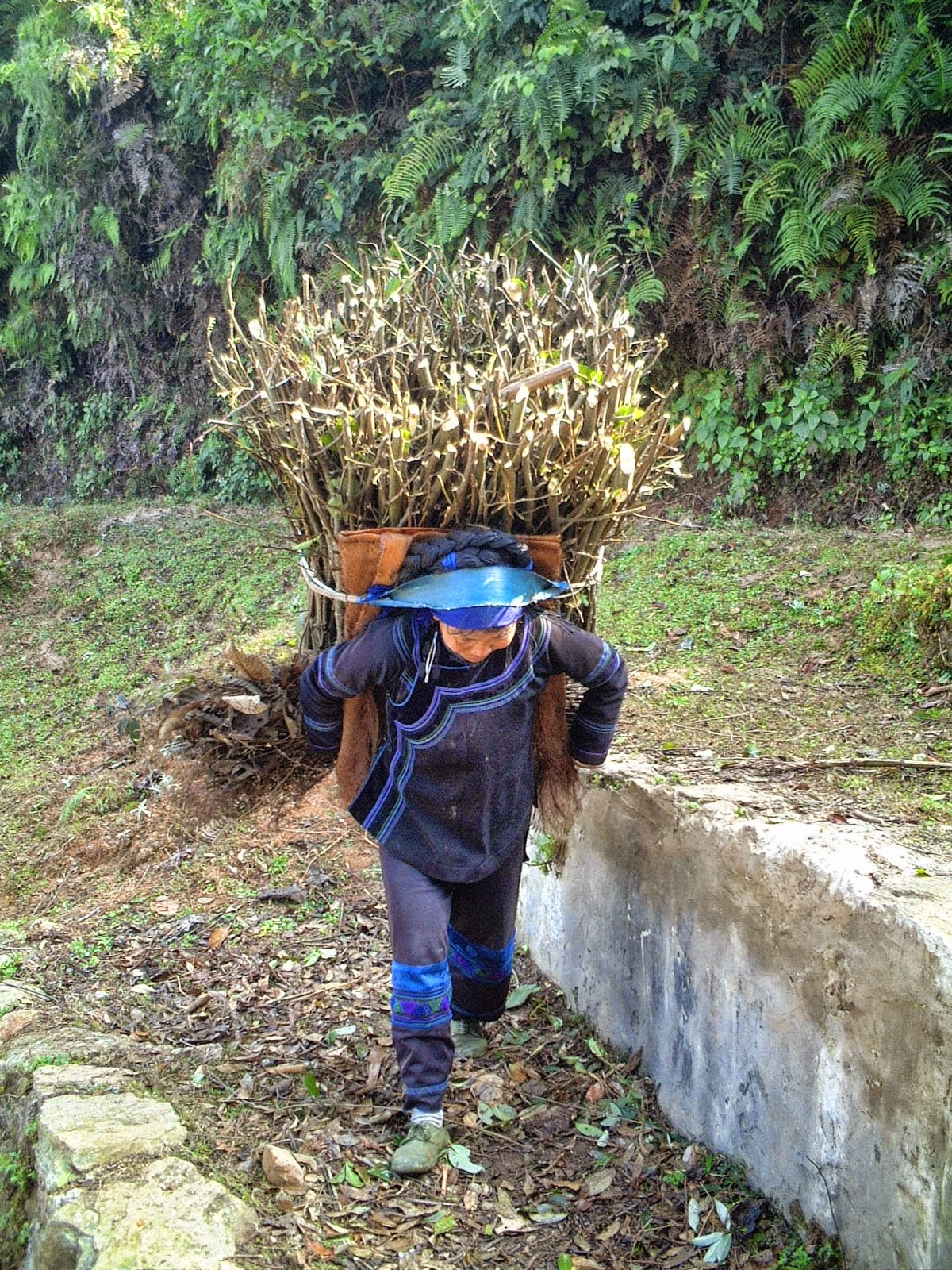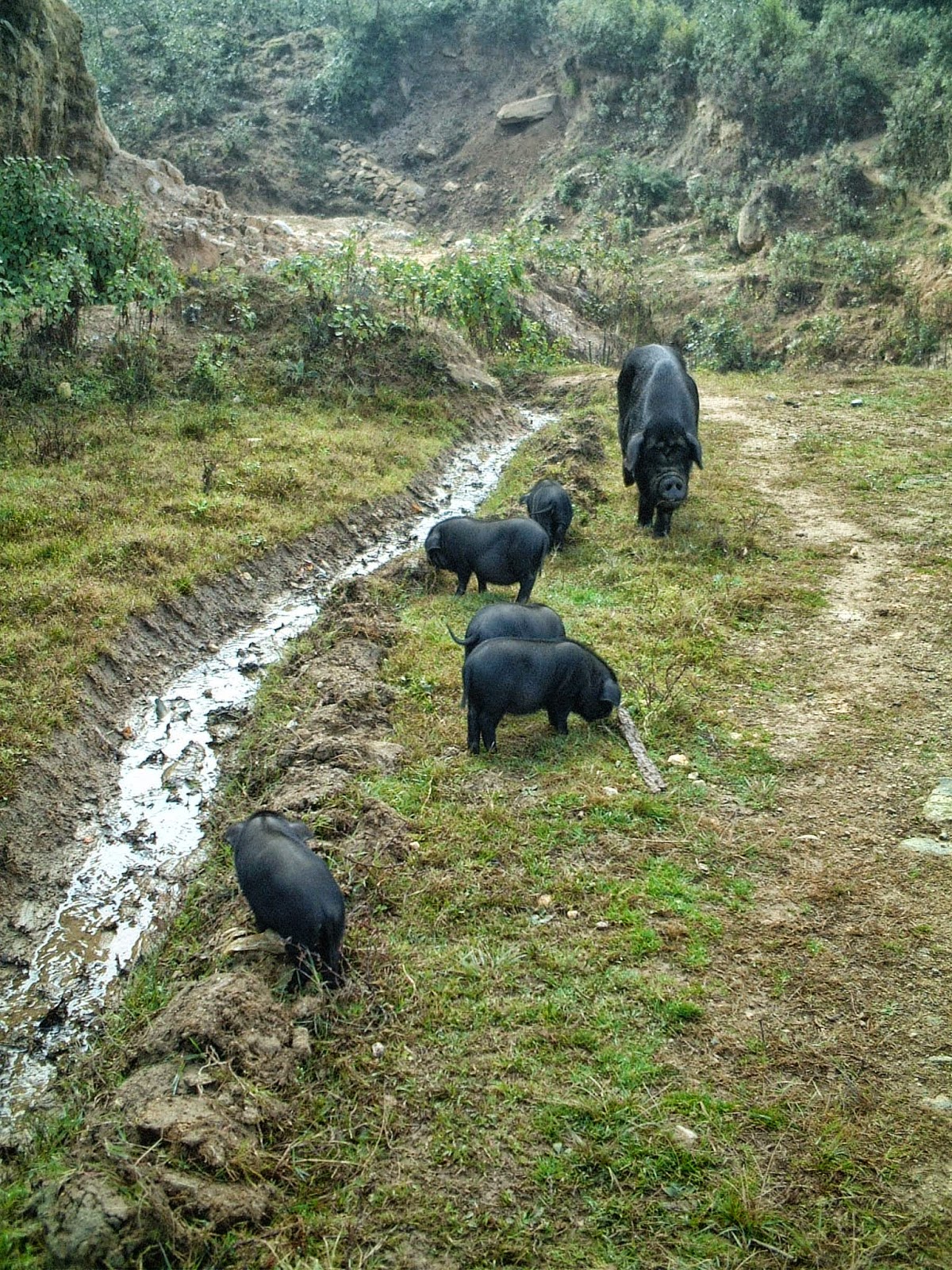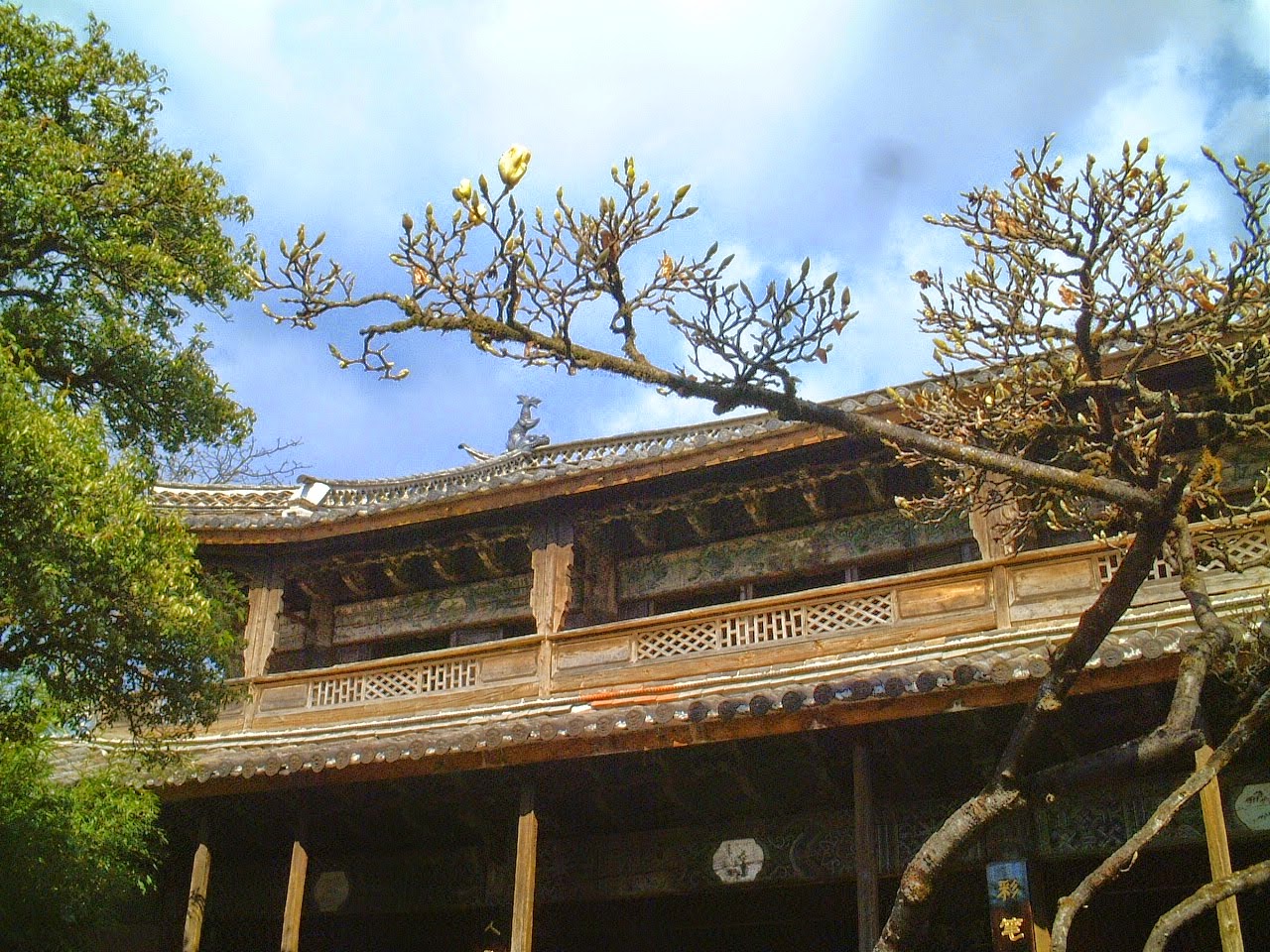A Live Land Art and Land Sculpture by the Hanis
The 1,300-year-old rice terraces of Yuanyang, the heartland of the Hanis reflects the outstanding
achievement and the enduring great ingenuity of the Hani people in the
province of southern Yunnan. The rice terraces with an area of over 16,000 hectres feed about eighty villages.
In the four counties of Honghe, Hani and Yi autonomous prefecture, the Hani rice terraces cover a massive area of over 160,000 hectres; rising from the banks of the Hong River across to the Ailao Mountains at over 3000 metres above sea level.
Southern Yunnan
Over the past centuries, the ancestors of the Hanis had created a remarkable rice cultivation culture and a masterpiece of land sculpture. The Hani people work arduously, living off the land (靠山吃山);
relying on the natural resources around them.
The allure of the Hani rice terraces has attracted numerous visitors and avid photographers to Yuanyang to savour the spectacular landscapes throughout the year.
The allure of the Hani rice terraces has attracted numerous visitors and avid photographers to Yuanyang to savour the spectacular landscapes throughout the year.
A raw December sunset upon the flooded rice terraces
Enchanting flooded terraced fields shrouded by fog and clouds
The terraces rise up to 3000 steps with slopes varying from 15 degrees to 75 degrees
Absolute grandeur of endless rice terraces
Hanging out with the Hani children...
Favourite pastime -- the Hani boys having fun playing and riding water buffalos in the village
Hani ethnic woman folk in traditional daily wear
Free-range pigs
Hani dwellings -- they build their houses on hill slopes that are either two or three storeys of mud walls, thatched roofs supported by wood pillars on stone foundations.
Seriously? Insect infused wine...
We stayed at a local village home; savoured the simply delicious meals prepared by the owner, using fresh local produce.
Curious, I tried the 'wow' fiery homemade insect infused wine, herbal infused wine and, had a go at smoking the enormous bamboo pipe generally used by men. Nothing like spending a pleasurable evening with the Hanis!
Jianshui Ancient Town
Visiting Jianshui ancient town, that has a history of around 1200 years, was like stepping back to the Ming and Qing dynasty -- walking along the cobblestone streets, visiting the mansion of the Zhu Family, enjoying the ancient dwellings, the Confucius temple and the purple pottery craftwork.
Jianshui Zi Tao Pottery
The
purple pottery culture has a history of about 900 years. We found this
family owned workshop that specializes in the traditional purple pottery
craftwork; custom-made for their customers.
Piles of pottery clay pots in the yard
The workshop
A craftsman moulding a pot
Helpers skillfully piling up pottery of clay pots
Beautiful works of traditional purple pottery art -- the tea cups, tea jars, an ocarina (right). Fortunately, they had some pieces available that I could bring back!
Indeed, it is the painting and calligraphy art pottery; the perfect combination of the works of painting and calligraphy and, the purple pottery process that has made it a unique cultural heritage of Jianshui.
This had been a fascinating visit to have gained in-depth knowledge of the traditional folk art.
The Ancient Water Wells
This laid-back ancient town has 100 ancient wells scattered all over town. Each well has a name and tells an interesting story.
We visited several of them. The largest well was built in 1360, near to 西门 (West Gate), the 西井 (West Well).
This well has a diameter of over three metres. According to historical records, during the early Ming dynasty, this was once the only water supply to the entire town. The well that never runs dry!
Up to the present day, the local folks prefer to use the well water instead of tap water. The mineral water that tastes naturally sweet, refreshing, and makes a perfect cup of flavourful tea!
Ancient Water Wells and Tofu
Naturally,
with pristine water from the wells, the local folks have created a
unique tofu cottage industry. We visited one workshop that makes the traditional tofu.
The perfect healthy snack at anytime! Savouring the simple yet deliciously fragrant soya bean tofu; the spicy or non-spicy barbecued tofu and the stinky ones too!
The Zhu Family Gardens
This grand mansion was built by Zhu Weiqing and his brothers during the Qing dynasty. It occupied an area of over twenty thousand square metres. It was designed to emulate the classical novel, "A Dream of the Red Mansion" -- the group of houses and the many rooms within, the main ancestral hall, the numerous courtyards of different sizes with their sky-well, the sprawling gardens with landscapes and ponds and, an open-air theatre!
The architectural and intricate designs reflect an amazing work of art of the ancient builders and craftsmen.
Wandering the maze of the Zhu Family Gardens...
The main entrance
The open-air theatre -- the stage was partly constructed on the water
The Zhu Family Gardens -- it appeared that there were perhaps fewer visitors that day since I did not see a single soul around. I truly enjoyed the fine and intricate designs of the brilliant craftsmanship that went into everyone stone and wooden pillar, wooden frame depicting such lifelike three dimensional figurings, animals and flowers that tells a story.
Thanks Dong zong for your warm hospitality for taking us to savour the delectable local cuisines and having your driver, Zhang sifu, to take us on this leg of the journey! It had been incredibly fun!
The Shangri-la of Yunnan
The overland journey from Lijiang to Deqin, enroute Zhongdian offers some spectacular mountainscapes -- the Jade Dragon Mountain range, the Jinsha Grand Canyon and the Baima Snow Mountain Nature Reserve region.
The majestic Jinsha River Grand Canyon
Songzanlin Monastery. We visited a Tibetan family to learn about the farming life in this region.
A good stop to spend the night with a Tibetan family or at a local Tibetan guesthouse; listening to the interesting tales of The Ancient Tea Horse Route...
Traditional Tibetan earthen pot -- all warm and cosy and, enjoying butter tea!
Some interesting traditional Tibetan collectibles...
The Ancient Tea Horse route (Chama Gudoa) town. Like the locals, I drank the crystal clear spring water directly from the fountain.
In Deqin, we visited the Ganden Dongzhulin Monastery and a nearby small nunnery, travelled back to Zhongdian to south of the town to visit Gochen Gompa, a small Tibetan monastery with murals and, stayed at a Tibetan village home before driving back to Lijiang the next day.
Lugu Lake
A natural pristine lake, located on the northwest plateau of Yunnan, at an altitude of 2,685 metres is home to the Mosuo people although several ethnic sub-groups also live by the lake.
The Mosuo people have a unique cultural tradition. The Mosuo women own the lands, raise their young and manage the household.
The snaky mountain road to Lugu Lake...
After taking the final snaky turn around the mountain, we came upon narrow mountain snowy road...
Finally, after about eight hours, we arrived at a small village by the shoreline of Lugu Lake
Quaint village of traditional houses dotted the shoreline
Picturesque sunset -- a chilly December evening...
Traditional village dwellings
Drying corn on the roof top of a village abode
At the guesthouse restaurant -- this specially prepared "treasure" soup in an earthen pot tasted absolutely yum!
We stayed in a Musuo guesthouse managed by a husband and wife team -- the husband whipped up simple delectable dishes using local produce. The wife entertained us with stories of her people, sang Musuo folk songs and together, we all enjoyed having their very own homemade rice wine!Outside, a group of local visitors were enjoying a whole barbecue lamb. We could not resist and ordered a lamb leg for late supper -- the meat tasted absolutely succulent!
Lush mountain peaks surround the lake
During our stay I met with a bright, bubbly Musuo teenager. She spent most of her time with us; shared stories about her family, their folk customs and traditions. I had wished we stayed another night to visit her grandma living on the other side of the mountain, but we had to move on.
The several guesthouses at the village that we stayed had recently been relocated, had moved inland away from the shoreline to avoid pollution in the lake.
Before the road was made accessible and before the influx of tourists, the Musuo people used to enjoy drinking the crystal clear water directly from the lake.
A fantastic place to unwind and relax for a few days.
Entrance ticket : 78 Yuan (December 2006)
Shuhe Old Town
Once a main stop along the traditional Tea Horse Trail Route located 4km northwest of Lijiang Ancient Town, Shuhe Old Town provides a refreshing change.
Shuhe Old Town -- a closer vista of the Jade Dragon Mountain
Village dwellings and the snow-capped Jade Dragon Mountain
Village farmland and the surrounding rustic village homes
A traditional gourd and bamboo flute
Hey, what's up?
Most of the tourists shops are located in the main town square. A Naxi ethnic woman folk
We stayed in Shuhe Old Town to immerse in the old rustic charm of village life with Naxi folks going about their daily lives, strolling along small alleyways discovering interesting finds.
Baisha Ancient Town
Baisha literally means, 'white sand' because of the white sand in the area. The temples and the palaces were originally built during the Ming dynasty.
Dabaoji Palace
The pebble pathway
The interesting Ming architectural structure and designs
Exquisite
Fine works of folk art
Arhat sculptures
The one and only renown Dr Ho, a Naxi traditional medicine physician
Naxi women folks practising traditional folk dance -- the one incidental performance not for tourists!
At our Naxi driver's village home
A homemade simple authentic Naxi meal prepared by our Naxi driver's wife. He had invited two other guests; one from Hong Kong and the other a local. We brought some cigarettes and wine for our driver, went to the kitchen quarter to meet his wife and talked to her for a bit to thank her and handed her a 'hong bao' that she accepted shyly.
The two weeks overland journey from mid-December started out in Kunming to the southern region -- the Jianshui Ancient Town and the amazing Hani rice fields. From Shuhe Old Town, we travelled overland across spectacular mountainscapes of the Baima Snow Mountain Nature Reserve region -- the northwest plateau to Zhongdian or Shangri-La, the Ancient Tea Horse Route (Chama Gudao), continuing to Benzilan and Deqin and, returning to Shuhe Old Town, Lijiang. The final leg of our journey took us to the beautiful alpine Lugu Lake (2685m) of the Mosuo people had all but been one incredibly fun-filled journey.
I hope to return to do the overland cross border journey between the two neighbouring countries of Yunnan and northern Vietnam or Yunnan and western Burma or Yunnan and Laos!
(December 2006)











.JPG)








.JPG)








































.JPG)
























.JPG)









.JPG)
